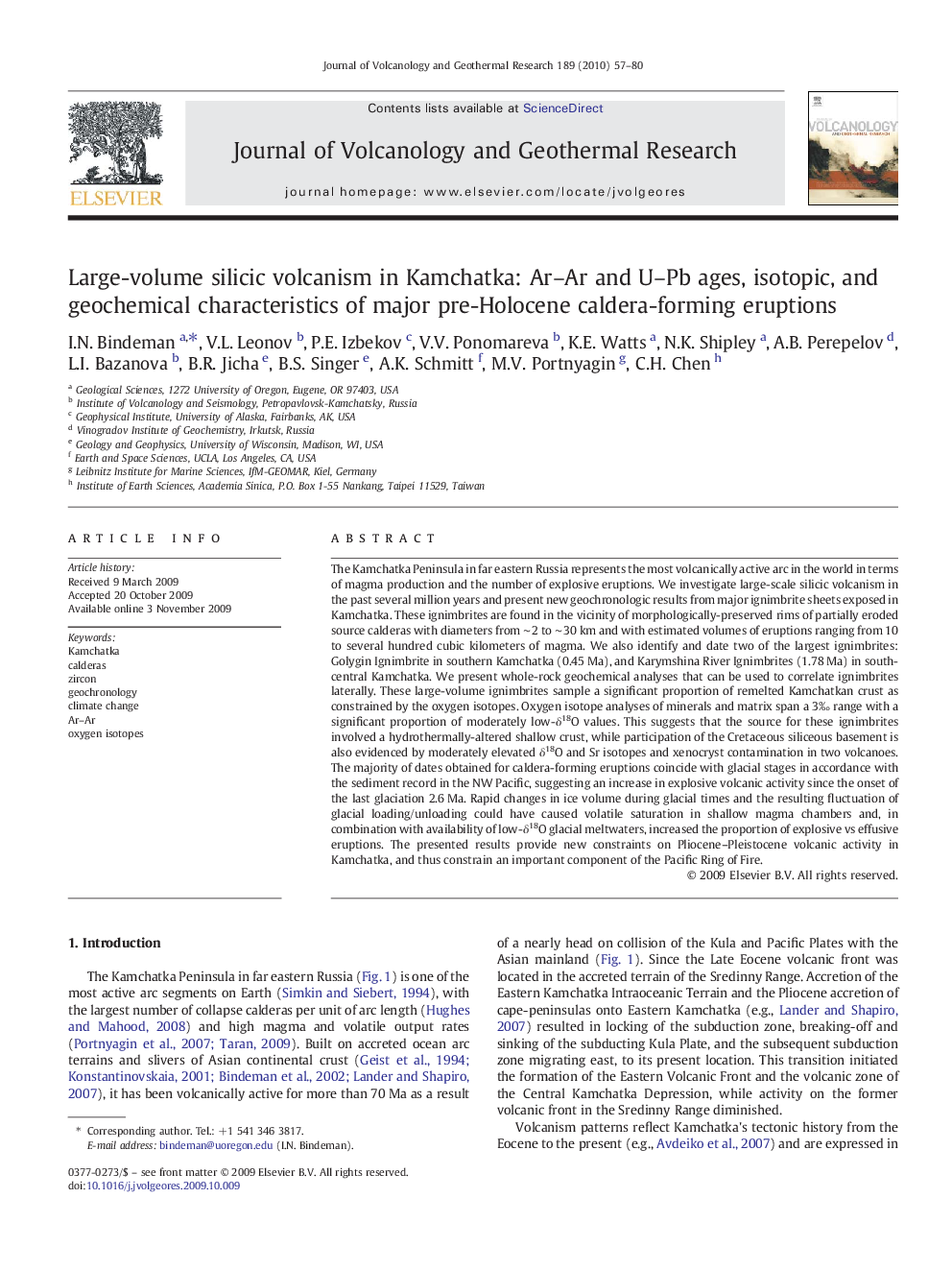| کد مقاله | کد نشریه | سال انتشار | مقاله انگلیسی | نسخه تمام متن |
|---|---|---|---|---|
| 4715179 | 1638427 | 2010 | 24 صفحه PDF | دانلود رایگان |

The Kamchatka Peninsula in far eastern Russia represents the most volcanically active arc in the world in terms of magma production and the number of explosive eruptions. We investigate large-scale silicic volcanism in the past several million years and present new geochronologic results from major ignimbrite sheets exposed in Kamchatka. These ignimbrites are found in the vicinity of morphologically-preserved rims of partially eroded source calderas with diameters from ∼ 2 to ∼ 30 km and with estimated volumes of eruptions ranging from 10 to several hundred cubic kilometers of magma. We also identify and date two of the largest ignimbrites: Golygin Ignimbrite in southern Kamchatka (0.45 Ma), and Karymshina River Ignimbrites (1.78 Ma) in south-central Kamchatka. We present whole-rock geochemical analyses that can be used to correlate ignimbrites laterally. These large-volume ignimbrites sample a significant proportion of remelted Kamchatkan crust as constrained by the oxygen isotopes. Oxygen isotope analyses of minerals and matrix span a 3‰ range with a significant proportion of moderately low-δ18O values. This suggests that the source for these ignimbrites involved a hydrothermally-altered shallow crust, while participation of the Cretaceous siliceous basement is also evidenced by moderately elevated δ18O and Sr isotopes and xenocryst contamination in two volcanoes. The majority of dates obtained for caldera-forming eruptions coincide with glacial stages in accordance with the sediment record in the NW Pacific, suggesting an increase in explosive volcanic activity since the onset of the last glaciation 2.6 Ma. Rapid changes in ice volume during glacial times and the resulting fluctuation of glacial loading/unloading could have caused volatile saturation in shallow magma chambers and, in combination with availability of low-δ18O glacial meltwaters, increased the proportion of explosive vs effusive eruptions. The presented results provide new constraints on Pliocene–Pleistocene volcanic activity in Kamchatka, and thus constrain an important component of the Pacific Ring of Fire.
Journal: Journal of Volcanology and Geothermal Research - Volume 189, Issues 1–2, 1 January 2010, Pages 57–80